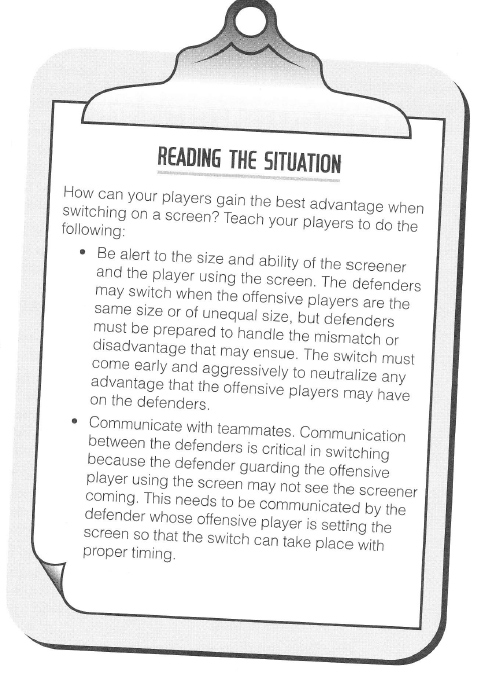|
Switching on a Screen by American Sport Education Program
Switching on a screen is a defensive tactic where two defenders switch defensive assignments in an effort to prevent the offense from gaining an advantage on the screen. When an offensive player sets a screen, the defender guarding the screener will call out, "Switch," which cues the defender being screened to switch defensive assignments and pick up the teammate's player (i.e., the screener). The defender who was guarding the screener picks up the offensive player coming off the screen. Switching on screens will give the offensive players very little space to execute a shot or a pass. The defender who is guarding the screener needs to switch to the offensive player coming off the screen immediately. This will limit the time for the shot if the offensive player is dribbling off the screen or will deny the pass if the offensive player coming off the screen does not have the ball. WATCH OUT!
ACQUIRING THE APPROPRIATE KNOWLEDGE Rules
Strengths and Weaknesses of Opponents
|
|
|







